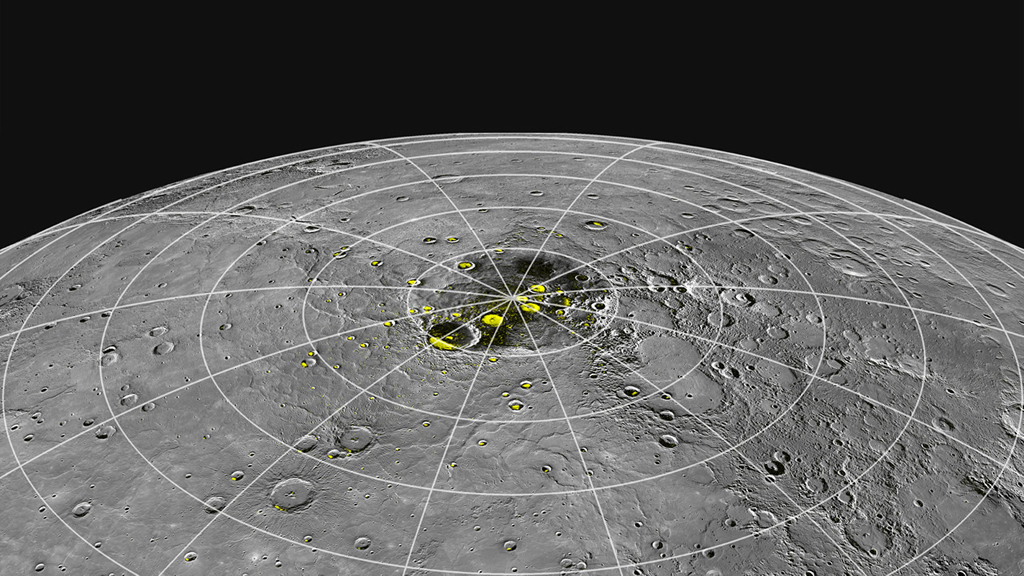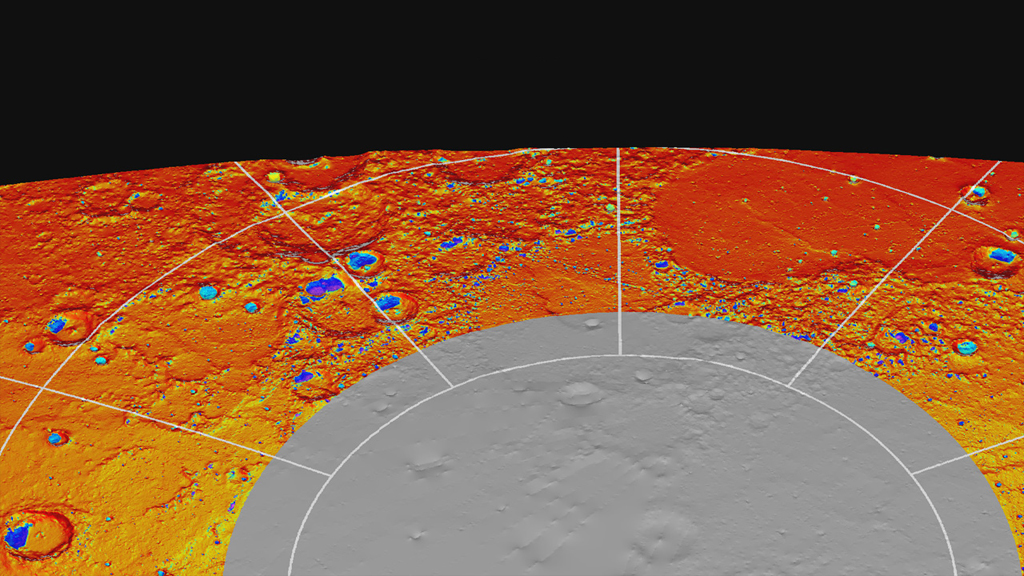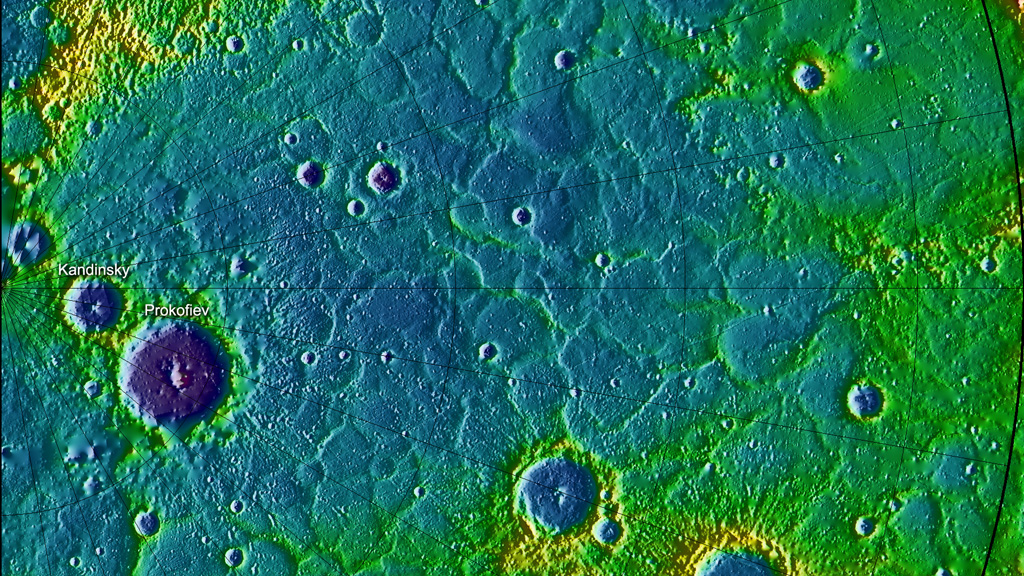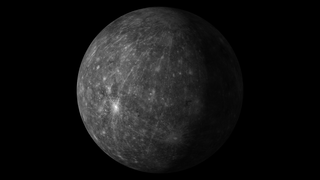Planets and Moons
ID: 11184

Mercury, the closest planet to the sun, sits in the hot seat, with temperatures soaring up to 800 degrees Fahrenheit. Certain spots at the planet's north and south poles, however, remain extremely cold—so cold, in fact, that scientists long suspected this sun-scorched planet of harboring ice. Sure enough, in 2012 NASA's MESSENGER (MErcury Surface, Space ENvironment, GEochemistry, and Ranging) mission reported finding deposits of ice and frozen chemicals at Mercury's north pole. Granted, Mercury doesn't have the same kind of ice cap Earth does. But if all the deposits were added up, there would be enough ice to bury Washington, D.C., under a layer two miles thick. Watch the animation to see just how bone-chillingly dark Mercury's north pole can be, especially in deep craters, where the sun may never shine.





Mercury's Ice Lockers






Related Story
For More Information
Story Credits
Visualizer/Animator:
Erwan M. Mazarico (Massachusetts Institute of Technology)
Video Editor:
Dan Gallagher (USRA)
Producer:
Dan Gallagher (USRA)
Lead Scientist:
Gregory A. Neumann (NASA/GSFC)
Lead Writer:
Elizabeth Zubritsky (ADNET)
Erwan M. Mazarico (Massachusetts Institute of Technology)
Video Editor:
Dan Gallagher (USRA)
Producer:
Dan Gallagher (USRA)
Lead Scientist:
Gregory A. Neumann (NASA/GSFC)
Lead Writer:
Elizabeth Zubritsky (ADNET)
Please give credit for this item to:
NASA's Goddard Space Flight Center
Cover image courtesy of NASA/Johns Hopkins University Applied Physics Laboratory/Carnegie Institution of Washington
Video courtesy of NASA Goddard Space Flight Center/Massachusetts Institute of Technology/Johns Hopkins University Applied Physics Laboratory/Carnegie Institution of Washington
North pole temperature image courtesy of NASA/UCLA/Johns Hopkins University Applied Physics Laboratory/Carnegie Institution of Washington
Topography image courtesy of NASA/Johns Hopkins University Applied Physics Laboratory/Carnegie Institution of Washington
Cartoon sequence courtesy of NASA/UCLA/Johns Hopkins University Applied Physics Laboratory/Carnegie Institution of Washington
NASA's Goddard Space Flight Center
Cover image courtesy of NASA/Johns Hopkins University Applied Physics Laboratory/Carnegie Institution of Washington
Video courtesy of NASA Goddard Space Flight Center/Massachusetts Institute of Technology/Johns Hopkins University Applied Physics Laboratory/Carnegie Institution of Washington
North pole temperature image courtesy of NASA/UCLA/Johns Hopkins University Applied Physics Laboratory/Carnegie Institution of Washington
Topography image courtesy of NASA/Johns Hopkins University Applied Physics Laboratory/Carnegie Institution of Washington
Cartoon sequence courtesy of NASA/UCLA/Johns Hopkins University Applied Physics Laboratory/Carnegie Institution of Washington
Short URL to share this page:
https://svs.gsfc.nasa.gov/11184
Keywords:
SVS >> App
NASA Science >> Planets and Moons
https://svs.gsfc.nasa.gov/11184
Keywords:
SVS >> App
NASA Science >> Planets and Moons








